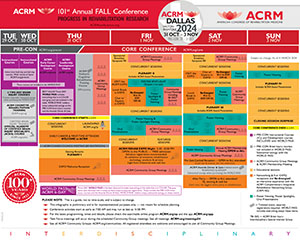
David A. Brown, PT, PhD, FAPTA, FASAHP
Dean/Professor
University of Texas Medical Branch
David A. Brown, PT, PhD, FAPTA, FASAHP
Senior Vice President and Dean
George T. Bryan Distinguished Professor
School of Health Professions
The University of Texas Medical Branch
301 University Blvd., Galveston, TX 77555-0128
B. Positions and Honors
Positions and Employment
1992-1998 Visiting Associate Professor, Samuel Merritt College, Physical Therapy
1993-1998 Consulting Assistant Professor, Stanford University, Fnl Restoration
1998-2007 Assistant Professor, Northwestern University, PTHMS
1999-2011 Associate Professor, Northwestern University, PM&R
2000-2011 Associate Professor, Northwestern University, Neuroscience
2004-2011 Professor (Adjunct Faculty), Rocky Mtn U Health Prof, Graduate School
2007-2011 Associate Professor, Northwestern University, PTHMS
2007-2011 Member Motor Function, Speech and Rehabilitation Study Section, (MFSR) NIH
2008-2011 Associate Professor, Northwestern University, Biomedical Engineering Department
2012-2019 Professor, University of Alabama at Birmingham, Physical Therapy
2012-2019 Program Director, University of Alabama at Birmingham, Rehabilitation Science PhD
2015-2019 Co-director, UAB Center for Disability Health and Rehabilitation Science
2019-present Sr VP/Dean/Dist Prof, University of Texas Medical Branch, School of Health Professions
Other Experience and Professional Memberships
1981 – present American Physical Therapy Association
Current member of Neurology, Education, and Research sections.
1987 – present Society for Neuroscience
1991 – present International Gait and Posture Research Society since
1992 – present Society for Neural Control of Movement
2002 – 2007 Advisory Committee Member – NIDRR RERC – Machines Assisting Rehab Science (MARS) at Rehabilitation Institute of Chicago, Dr. W. Zev Rymer (PI)
2006 Member (Permanent) Motor Function, Speech and Rehabilitation Study Section (MFSR) NIH, Special Emphasis Panel BBBP, Applications in Aging and Cognition, June
2008 – 2011 Member (Permanent) Motor Function, Speech and Rehabilitation Study Section (MFSR) NIH, Feb
2008 Member Deployment Related Medical Research Program HDA-TTR-1
2008 Member Deployment Related Medical Research Program ATTD-PHTBI-5
2009 Member, Research to Practice, Practice to Research Workshop sponsored by APTA, December 4-6, 2009, Philadelphia, PA
2009 Member University South Florida Proposal Review Study Section
2014 – present Associate Editor – Journal of Neural Engineering and Rehabilitation
2014 – 2015 Member multiple NSF Study Review Groups
American Physical Therapy Association:
1995 – present Member - Stroke SIG - Neurology section; Section on Research; Education Section
1997 – 1999 Member - Annual APTA Scientific Meeting Program Advisory
1997 – 2000 Chairperson, Research Committee - Neurology section
1999 – 2001 Secretary, Executive Committee – Section on Research
2000 – 2003 Vice President, Executive Committee - Neurology section
2005 – 2007 Annual Conference Program Proposal Subcommittee – Exercise
2009 Member – Special Invited Panel, From Research to Clinic and Back Again Workshop
Associate Editor: Journal of Neural Engineering and Rehabilitation; Article reviewer for Physical Therapy, Experimental Brain Research, Journal of Neurophysiology, Journal of Orthopedic and Sports Physical Therapy, Journal of Applied Physiology, Neurology Report, Journal of Rehabilitation Research and Development, Topics in Stroke Rehabilitation, IEEE Transactions Neural Engineering and Rehabilitation, Journal of Neural Engineering and Rehabilitation.
Honors
1992, 1997 Department of Veterans Affairs Superior Performance Award
2001 - 2002 Searle Junior Teaching Fellow Award
2002 Margaret L. Moore Outstanding New Faculty – APTA
2005 Alliances for Graduate Education and the Professoriate Mentor
2005 Silver Medal - Industrial Design Excellence Award (IDSA)
2009 Ming Annual Lectureship, Department of Physical Therapy, University Wisconsin – Madison
2011 Marian Williams Research Award – APTA
2015 Catherine Worthingham Fellow of the APTA
2019 George T. Bryan Distinguished Professor, UTMB School of Health Professions
2022 Fellow of the Association of Schools Advancing Health professions
C. Contributions to Science
1. Motor behavior is not worsened with exertion in people poststroke: I, along with my colleague Steven Kautz, pioneered the use of a pedaling ergometer to study a highly described movement task. This experimental paradigm allowed us to carefully manipulate the workloads and speeds at which people poststroke were asked to move and we discovered that, contrary to the thought at the time, faster speeds and greater workloads DID NOT further impair mechanical work and muscle activity timing. This work led to further exploration by others and us on the benefits of progressive resistive exercise poststroke.
a. Brown, D.A., Kautz, S.A. Speed-dependent reductions of force output in people with poststroke hemiparesis. Physical Therapy 79:919-30, 1999. PMID: 10498969.
b. Brown, DA. and Kautz, S.A. Increased workload enhances force output during pedaling exercise in persons with poststroke hemiplegia. Stroke 29, 598-606, 1998. PMID: 9506599.
c. Kautz, S.A. and Brown, DA. Relationships between timing of muscle excitation and impaired motor performance during cyclical lower extremity movement in post-stroke hemiplegia. Brain 121, 515-526, 1998. PMID: 9549527.
d. Schindler-Ivens S, Brown DA, Lewis GN, Nielsen JB, Ondishko KL, and Wieser J.: Soleus H-reflex excitability during pedaling post-stroke. Exp Brain Res. 188(3):465-74. 2008. PMID: 18427793. PMCID: PMC3912995.
2. Motor behavior poststroke is very flexible and adaptable: We took advantage of the pedaling task paradigm to judiciously manipulate a large variety of pedaling variations to test hypotheses about the ability of the poststroke nervous system to adapt to a large number of task variations. We found that the poststroke nervous system was able to adapt appropriately to forward vs. backward direction pedaling, one vs two leg pedaling, changes to body orientation, and different phase relationships of one leg to the other.
a. Schindler-Ivens, S., Brown, DA, Brooke, J.D. Direction-Dependent Phasing of Locomotor Muscle Activity is Altered Post-Stroke. J Neurophysiol. 92:2207-16, 2004. Epub 2004 Jun 2. PMID: 15175363; PMCID: PMC3912995.
b. Alibiglou L, López-Ortiz C, Walter CB, Brown DA: Bilateral limb phase relationship and its potential to alter muscle activity phasing during locomotion. J Neurophysiol. 102(5):2856-65. 2009. PMID: 19741107; PMCID: PMC4073953.
3. Collaborative Robots for Rehabilitation: I, and my colleagues at Northwestern University, Drs Michael Peshkin and Ed Colgate, partnered to design and fabricate an overground walking and balance system that allowed people with balance impairments to walk and perform challenging balance tasks while protected against falls (The KineAssist). This “collaborative robot” or “cobot” was a new type of device that worked in coordination with the manual needs of the clinician. The device technology was patented, and then licensed to HDT Robotics who is now marketing the system worldwide.
a. Patton J, Brown DA, Peshkin M, Sangos-Munne JJ, Makhlin A, Lewis E, Colgate EJ, and Scwandt D: A novel robotic device to enhance balance and mobility training post-stroke. Topics in Stroke Rehabilitation 15.2: 131-9. (Mar) 2008. PMID: 18430678.
b. Burgess JK, Weibel GC, Brown DA: Overground walking speed changes when subjected to body weight support conditions for nonimpaired and post stroke individuals. J Neural Engr Rehab 7:6, 2010. PMID: 20149244; PMCID: PMC2827418.
c. Dionisio VC, Brown DA: Collaborative robotic biomechanical interactions and gait adjustments in young, non-impaired individuals. J Neural Engr Rehab 13(1):57, PMID: 27306027; PMCID: PMC4910204.
4. Challenging balance and walking exercises result in greater performance: More recently, we, at UAB are taking advantage of the KineAssist technology to expose people to super-challenging tasks. Typically, clinicians avoid a high level of challenge in stroke patients because it may lead to frustration and failure. To the contrary, we are observing that individuals become motivated by the challenge and work very hard to find a new movement solution to the difficult task problem.
a. Capo-Lugo C, Mullens, C, Brown DA: Maximum walking speeds obtained using treadmill and overground robot System in persons with post-stroke hemiplegia. J Neuroeng Rehabil. 2012 Oct 11;9:80. doi: 10.1186/1743-0003-9-80. PMID: 23057500; PMCID: PMC3539927.
b. Hurt CP, Wang J, Capo-Lugo C, and Brown DA: Effect of progressive horizontal resistive force on the comfortable walking speed of individuals post-stroke. J Neuroeng Rehabil. 2015 Feb 10;12(1):12. doi: 10.1186/s12984-015-0007-7. PMID: 25884953; PMCID: PMC4329221.
c. Wang J, Hurt CP, Capo-Lugo C, and Brown DA: Characteristics of horizontal force generation for individuals post-stroke walking against progressive resistive forces. Clin Biomech. 2015; 30(1):40-5. PMID: 25481856; PMCID: PMC4362732.
5. Posture and locomotor control interfere with each other during movement tasks: We first discovered, during a novel “standing” pedaling task, that locomotor control becomes degraded in terms of muscle activity and foot force output, when the postural demands of the task are increased. When the postural demands are removed, locomotor control is more similar to nonimpaired control. This important result contradicted the idea that the poststroke nervous system is unable to generate more normal patterns of muscle activity. On the contrary, our work showed that the nervous system can behave more appropriately when postural demands are removed.
a. Rogers, L.M., Brown, DA, Gruben, K.G. Foot force direction control during leg pushes against fixed and moving pedals in persons post-stroke. Gait and Posture 19:58-68, 2004. PMID: 14741304.
b. Liang J-N, Brown DA: Foot force direction control during a pedaling task in individuals post-stroke. J Neuroeng Rehabil. 2014 Apr 16;11:63. doi: 10.1186/1743-0003-11-63. PMID: 24739234; PMCID: PMC3996495.
The public url for myNCBI is located at: http://www.ncbi.nlm.nih.gov/sites/myncbi/1NsaowAugn9AB/bibliography/47709286/public/?sort=date&direction=ascending
D. Additional Information: Research Support and/or Scholastic Performance
Ongoing Research Support
No number Brown (PI) 11/1/2023- 10/30/2025
Moody Foundation
Post Brain Injury Walking and Balance Recovery Program
This project will develop a Post Brain Injury Walking and Balance Clinical Research Unit (CRU), at Moody Neurorehabilitation Institute’s (MNI) Galveston and Lubbock locations, that will focus on the development and testing of innovative assessment and intervention strategies to improve balance and walking outcomes for people after brain injury.
Role: PI
Grant # 90REGE0005 Patton, Reinkensmeyer (PIs) 10/01/18-09/30/23
HHS/NIDLIRR
COMET-RERC
The ResistX S/B project involves the development of a split-belt resistive treadmill system that can deliver differential forces to each leg separately. This device will be further developed and tested with individuals post stroke over a 12-week training period.
Role: Co-PI on sub-project
No number Brown (PI) 9/01/23-067/30/2023
UTMB CTSA Pilot
Holographic Patient Education Project (HoPE)
This project will develop a holographic interface within which learners and patients may observe and assess human movement after injury or illness to detect affected movements and postures.
Role: co-PI
Recent Past Research Support
#CNS-1918534 Hu, Brown (Co-PI) 08/01/19-07/31/22
NSF
Holo-iRehab. Intelligent Robot with Hologram-enhanced Virtual Reality for Effective Body Rehabilitation
This PFI-RP project aims to build a Holographic intelligent Rehab (Holo-iRehab) product to train poststroke
patients. It has 3 marketing-oriented new designs: (1) Resilient robotic assistance; (2) Fine-resolution leg training; and (3) Holographic co-rehab.
Role: Co-PI
Poster(s):
-
Saturday, November 2, 20243:30 PM - 3:45 PMSaturday, November 2, 20249:45 AM - 10:00 AM

.jpg)
.jpg)
.jpg)
